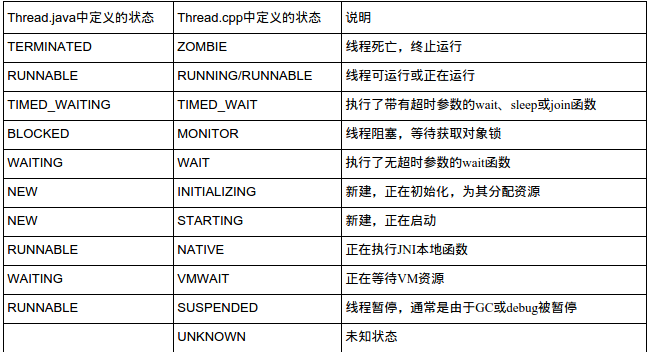背景
最近项目组需要实现捕获ANR并上传到公司服务器相关的功能,因此花了点时间来整理相关的知识,并从AMS源码与腾讯Bugly-SDK中逆向找到相关思路,在此分享给大家。
ANR是什么?
Application Not Responding的缩写,即应用程序无响应。简单来说,就是应用跑着跑着,突然duang~,界面卡住了,无法响应用户的操作如触摸事件等。
触发ANR的原因
应用进程自身引起
例如:
1.主线程阻塞、挂起、死循环
2.应用进程的其他线程的CPU占用率高,使得主线程无法抢占到CPU时间片其他进程间接引起(误伤)
例如:
1.当前应用进程进行进程间通信请求其他进程,其他进程的操作长时间没有反馈
2.其他进程的CPU占用率极高,使得当前应用进程无法抢占到CPU时间片
ANR的分类:
- 应用在5秒内未响应用户的输入事件,如按键或触摸事件
- BroadcastReceiver未在10秒内完成相关的处理
- Service的各个生命周期函数时20秒内没有执行完毕
主要还是以上3种情况,其根本原因都是主线程被阻塞导致的。
Tips:
其中2,3属于Background ANR,实际上已经发生了ANR,但不会进行对话框弹出。可以在Android开发者选项—>高级—>显示所有”应用程序无响应“,勾选后即可对后台ANR也进行弹框显示。
问题分解
要实现捕获ANR功能,简单来说,需要解决以下问题:
- 获取什么信息?
- 去哪里获取?
- 什么时候去获取?
对于上述问题,我们一步一步来,逐个解决。
一、获取什么信息?
1. Cause reason:
当ANR产生的时候,logcat会打印出一段log,会输出类似下面的信息。
1) 首先可以得到ANR所在进程的进程名、进程号、及出错的组件;
2) 其中Reason主要描述了ANR产生的具体原因/分类;
3) CPU usage...ago则主要记录了ANR发生前CPU的使用状况;
4) CPU usage...later则记录了ANR发生之后CPU的使用状况。
1 | E/ActivityManager: ANR in com.example.testapp (com.example.testapp/.CrashTestActivity) |
结合此部分信息进行分析可以初步得出产生ANR的基本原因,以及排除是否属于误伤。什么意思呢?也就是说如果发现ANR前后有某个进程在占用大量CPU,那么ANR的产生很可能是误伤-_-|||,具体可以回看上面关于ANR触发原因一节。
2. ANR traces
在知道了Cause reason之后,需要进一步的信息来确定ANR在代码中的位置,这个时候就要去查看traces文件了。每次产生ANR之后,系统都会向/data/anr/traces.txt中写入新的数据。内容大概如下:
1)介于----- pid 0000 xxx -----与----- end 0000 -----之间的为进程0000的所有线程堆栈信息。一般来说,发生ANR的进程信息会在文件头部,下面AMS源码分析的时候会说明为什么。
2) "main" prio=5 tid=1 TIMED_WAIT分为为线程名、线程优先级(默认值5)、线程ID、线程状态;主线程之后会接着打印进程中其他线程的信息,此处不再贴出。
1 | ----- pid 2480 at 2017-04-06 08:48:58 ----- |
Tips:
关于ANR traces的保存时长:
traces.txt:只保留最近一次发生ANR时的信息,位置:/data/anr/traces.txt
DropBox: Android 2.2 开始增加, 会保留历史上发生的所有ANR的logs,位置:/data/system/dropbox,保存时长3天。详见:ActivityManagerService.addErrorToDropBox()相关源码:
ActivityManagerService.java
DropBoxManagerService.java
SystemServer.java
3. 关于线程状态
了解线程的状态对分析traces文件至关重要,下表列出了各线程的状态及含义:
Read The Fucking Source Code
在解释后面的两个问题:2.去哪里获取?3.什么时候去获取?之前,我们需要简单的阅读下ActivityManagerService的源码了。
1) 在产生ANR的时候,会回调到AMS的appNotResponding()方法,以下为关键代码,中文注释为相关代码的解读:
1 | final void appNotResponding(ProcessRecord app, ActivityRecord activity, |
2) 我们来详细看下dumpStackTraces()这个方法,此处将dump出firstPids与lastPids进程的相关线程堆栈信息至traces.txt,中文注释为相关代码的解读。
1 | public static File dumpStackTraces(boolean clearTraces, ArrayList<Integer> firstPids, |
二、去哪里获取?
1. Cause reason:
- 关于reason信息的获取,到目前为止,我们只知道能在logcat中能检索到相关信息,难道要开个线程不断循环去检测logs?这想法看来还是Too Young Too Simple。
- 这里先说下结论,可通过
ActivityManagerService.getProcessesInErrorState()方法获取进程的ANR信息,此方法是通过逆向Bugly时发现的,后面会讲到。 - 此方法会遍历mLruProcesses,并根据进程目前的异常状态如crash或者anr类型,返回具体的ProcessErrorStateInfo,具体看代码,比较简单:
1
2
3
4
5
6
7
8
9
10
11
12
13
14
15
16
17
18
19
20
21
22
23
24
25
26
27
28
29
30
31
32
33
34
35
36
37public List<ActivityManager.ProcessErrorStateInfo> getProcessesInErrorState() {
...
synchronized (this) {
// iterate across all processes
for (int i=mLruProcesses.size()-1; i>=0; i--) {
ProcessRecord app = mLruProcesses.get(i);
if (!allUsers && app.userId != userId) {
continue;
}
if ((app.thread != null) && (app.crashing || app.notResponding)) {
// This one's in trouble, so we'll generate a report for it
// crashes are higher priority (in case there's a crash *and* an anr)
ActivityManager.ProcessErrorStateInfo report = null;
if (app.crashing) {
report = app.crashingReport;
} else if (app.notResponding) {
report = app.notRespondingReport;
}
if (report != null) {
if (errList == null) {
errList = new ArrayList<ActivityManager.ProcessErrorStateInfo>(1);
}
errList.add(report);
} else {
Slog.w(TAG, "Missing app error report, app = " + app.processName +
" crashing = " + app.crashing +
" notResponding = " + app.notResponding);
}
}
}
}
return errList;
}
注意app.notRespondingReport非空的时候才会返回,那它是什么时候初始化的呢?是在makeAppNotRespondingLocked()方法中。其中此方法又是在appNotResponding()中被调用的(在所有进程写完traces.txt之后,可回看上面AMS相关代码)
1 | private void makeAppNotRespondingLocked(ProcessRecord app, |
2. ANR traces
这部分内容获取比较简单,直接读取/data/anr/traces.txt里面第一个进程的信息即可,能保证首个进程即是当前ANR的进程,至于为什么上面分析AMS源码中已经说明了,当前进的pid会首先被add进firstPids中被优先输出。此处的难点是如何从traces中过滤出相关的信息,如进程名,进程pid,生成时间,各线程名、tid、优先级、状态、堆栈信息等。这里就要用到强大的正则表达式来进行过滤了,此处忽略一万字…(大家可以反编译Bugly的SDK,参考里面的正则表达式)
三、什么时候去获取?
在上面AMS的源码分析中,我们可以关注到dumpStackTraces()方法中的FileObserver,系统通过该类监听文件/data/anr/traces.txt来达到顺序依次写入各个进程的traces信息。按照这个思路,当ANR发生的时候,我们也可以通过监听该文件的写入情况来判断是否发生了ANR,看起来这是一个不错的时机。需要注意的一点是,所有应用发生ANR的时候都会进行回调,因此需要做一些过滤与判断,如包名、进程号等。
在实现前,我们先来看看Bugly中是如何实现的。这里笔者反编译的是Bugly-v1.2.8版本,搜索关键字FileObserver,果不其然很快发现了一些相关代码,位于com.tencent.bugly.crashreport.crash.anr包下的b.class:
1 | protected synchronized void b() { |
上面这段代码比较简单,就是一个启动monitor的方法,监听/data/anr/这个目录,并过滤包含trace的文件名。在FileObserver创建的时候可以传入一个mask参数,8正是代表着CLOSE_WRITE这个常量,当有写入并且close的时候将会回调,跟AMS中的使用基本吻合。
继续翻看b.class的代码,当过滤出trace文件的时候,会执行b.this.a(var3)这个方法。从代码逻辑上可以看出,这是一个对trace文件有效性判断的方法,精简过后的代码如下:
1 | public final void a(String var1) { |
上面这段代码的意思也比较好理解,先解析出时间,对一些重复的回调或太频繁的ANR进行过滤(为什么会重复回调,因为上面阅读AMS源码的时候也说明了,firstPids中各个进程的信息会依次写入trace文件中)。然后对进程异常状态和进程号进行判断,过滤掉无效或其他应用的回调,最后对有效的trace进行处理。
这个时候ProcessErrorStateInfo这个类引起了我的注意,我们继续翻代码看他到底获取的是什么信息,进入this.a(this.g, 10000L)这个方法:
1 | protected ProcessErrorStateInfo a(Context var1, long var2) { |
可以把这段代码copy到自己的项目中跑一下,首先通过ActivityManager.getProcessesInErrorState()来获取系统中有所有异常进程的信息,通过condition来过滤出目标进程,而2正是代表着NOT_RESPONDING这个常量,即ANR异常。而ProcessErrorStateInfo中的shortMsg和longMsg变量正是我们之前在logcat中看到的Cause reason!
可以看到,其实Bugly对于ANR的触发时机监听也正是使用FileObserver来实现的。而且之前一直在思考logcat中的Cause reason是从哪里获取的现在也有了答案,反编译有些时候还真是个好法宝,嘿嘿嘿~
总结
至此,通过AMS源码分析和Bugly-SDK的逆向,我们终于解决了捕获ANR异常最重要的3个问题:1.获取什么信息?2.去哪里获取?3.什么时候去获取?希望这篇文章能给正在开发相关功能的同学们一些指导,顺便分享下自己的思路与经验~
参考
https://developer.android.com/training/articles/perf-anr.html#anr
http://gityuan.com/2016/07/02/android-anr/
http://blog.csdn.net/tencent_bugly/article/details/46650675